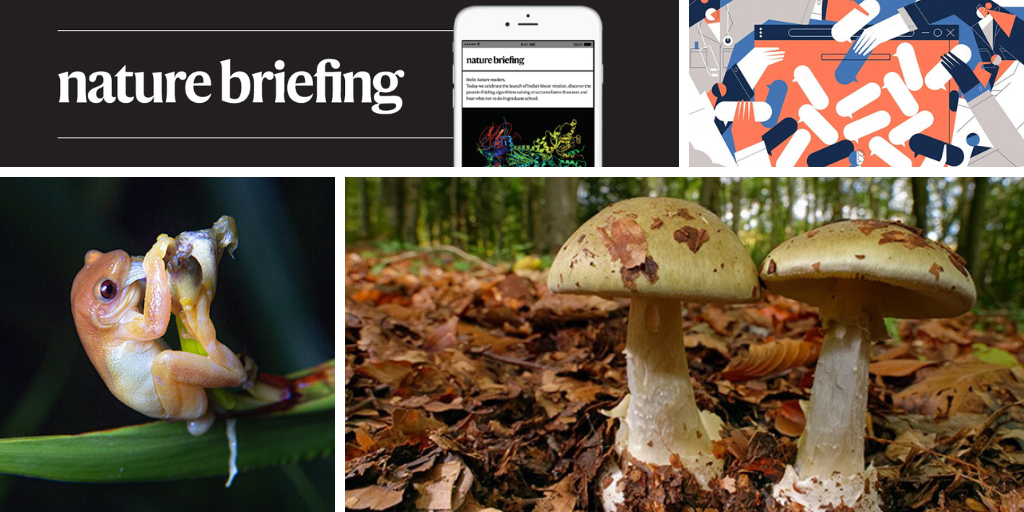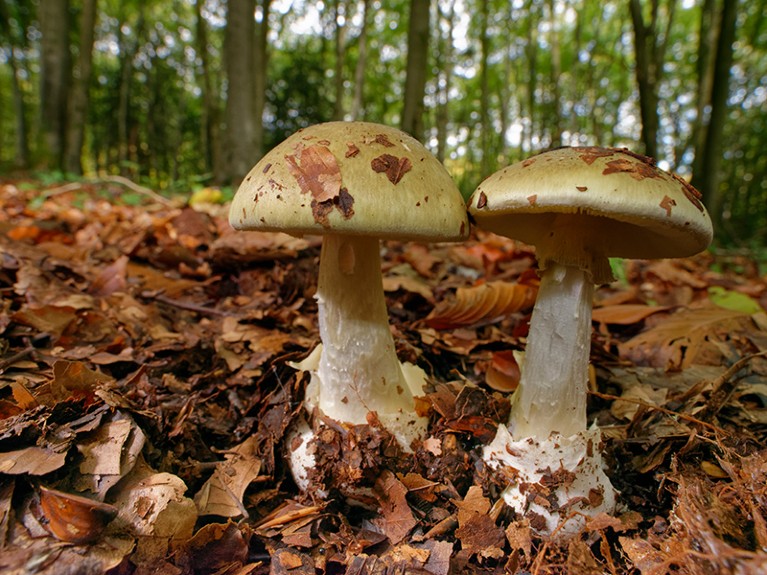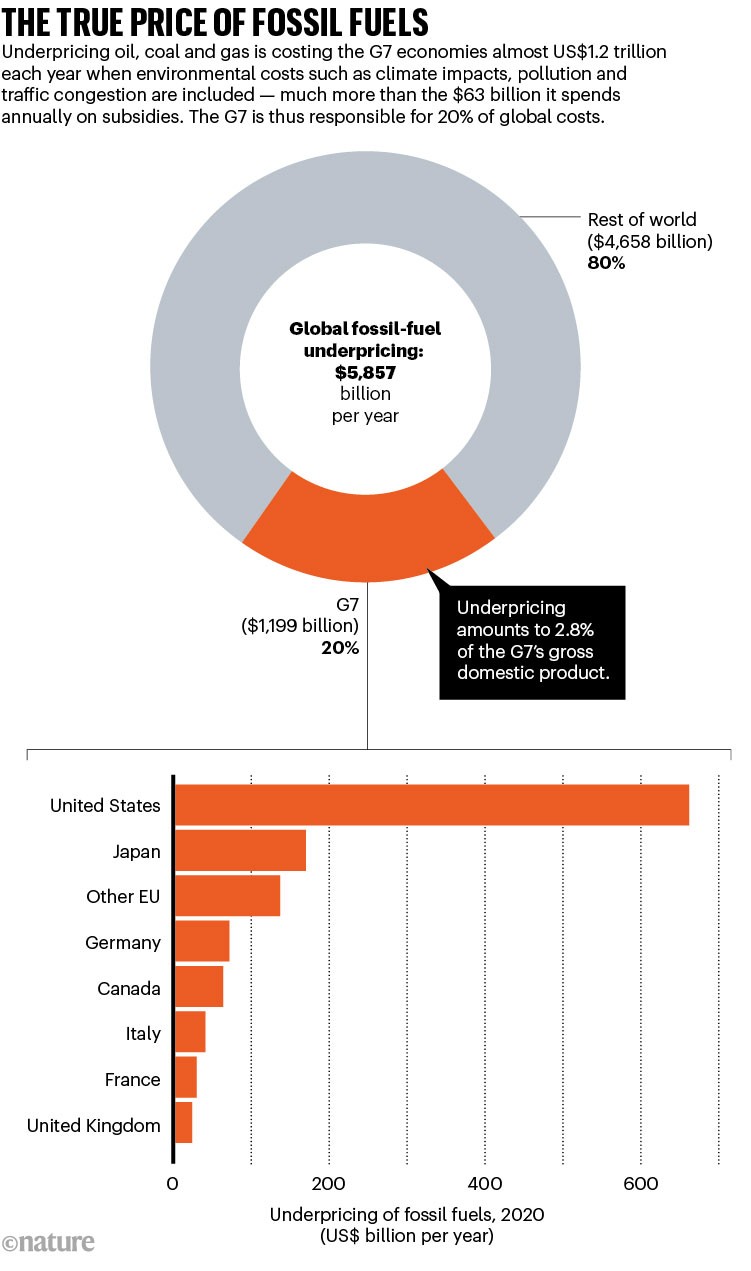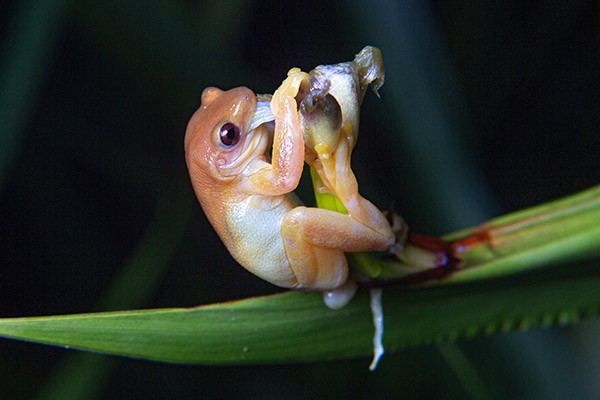Hello Nature readers, would you like to get this Briefing in your inbox free every day? Sign up here.
Ninety per cent of the fatalities caused each year by ingesting poisonous mushrooms are caused by death caps.Credit: Nick Upton/NaturePL
The CRISPR–Cas9 gene-editing tool might have cracked the mystery of how death cap mushrooms (Amanita phalloides) kill — and it led researchers to a potential antidote. Using the gene-editing technology, researchers created a pool of human cells — each with different genetic mutations — and exposed them to the mushrooms’ toxin. The toxin could not enter cells that lacked a functional version of an enzyme called STT3B, and cell survival increased. The researchers then sifted through thousands of chemical compounds to find one that would block the action of STT3B. They uncovered indocyanine green, a dye developed by the photography company Kodak in the 1950s and used in medical imaging. Indocyanine green has not yet been tested as an antidote in humans, but it reduced deaths when given to mice.
Reference: Nature Communications paper
Sweeteners don’t help people to lose weight in the long run and could increase the risk of type 2 diabetes and cardiovascular diseases if consumed continuously, the World Health Organization (WHO) advises. The guideline includes both artificial and natural sweeteners, such as aspartame and stevia. But it’s conditional, in keeping with life’s complexities — the WHO isn’t warning against sweetened toothpaste, for example, or recommending a change for people with pre-existing diabetes. The announcement contradicts some findings that sweeteners are harmless, even if they don’t offer any health benefits.
The New York Times | 5 min read
Reference: WHO guideline
Cancer surgeon Monica Bertagnolli will grapple with big challenges if she is confirmed as the new leader of the US National Institutes of Health (NIH). She might have to manage significant cuts to the NIH’s funding and learn hard lessons from the agency’s response to COVID-19, including how public support for science took a hit during the pandemic. Researchers hope that, under Bertagnolli’s leadership, diversity and equity will be priorities: over the past decade, for example, the agency has been awarding funding more and more to a small group of mostly white, male researchers.
Features & opinion
A giant survey of 20,000 researchers is one of several efforts to assess the scientific consensus on hot-topic issues such as vaccine safety and climate change. These projects aim to fight misinformation and support evidence-based policymaking. “We need to blast society with the good, the same way that the misinformation is being blasted from the other side,” says critical-care physician David Sweet, who co-founded one effort after seeing how anti-vaccine rhetoric was harming his patients. But some observers caution that such surveys might alienate, rather than engage, some people. “If we push too hard the narrative that you don’t believe this, but all scientists do, it could have the reverse effect,” says sociologist James Evans.
This week, the leaders of the Group of Seven (G7) economies — Canada, France, Germany, Italy, Japan, the United Kingdom and the United States, plus the European Union — will assemble in Japan. The group accounts for almost one-third of carbon dioxide emissions from fossil fuels. It also subsidizes oil, coal and gas to the tune of US$63 billion per year, or $62 per person, on average. Economist Edward Barbier outlines a three-part strategy to greening the G7:
• Remove market distortions favouring fossil fuels
• Foster a more-inclusive version of the Climate Club, its promising plan to spur the introduction of ambitious climate policies
• Help developing economies to decarbonize
Source: IMF (go.nature.com/3KKHML)
Image of the week
This tiny Brazilian tree frog, Xenohyla truncata, might be the first amphibian known to science that helps to pollinate plants. Researchers observed the sweet-toothed creature chomping on fruit, flowers and nectar. Pollen stuck to its back, prompting scientists to hypothesize that it could be a potential pollinator for the plants. Frogs had been discounted as pollinators because almost all of them are insectivores. “This is a threatened species and maybe the only species [of amphibian] in the world that acts as a pollinator,” says biologist and co-author Carlos Henrique de-Oliveira-Nogueira. “If we lose this species, we lose a unique ecological interaction between plants and amphibians.” (Scientific American | 3 min read) (Henrique Nogueira)










More News
Editorial Expression of Concern: Leptin stimulates fatty-acid oxidation by activating AMP-activated protein kinase – Nature
Quantum control of a cat qubit with bit-flip times exceeding ten seconds – Nature
Venus water loss is dominated by HCO+ dissociative recombination – Nature